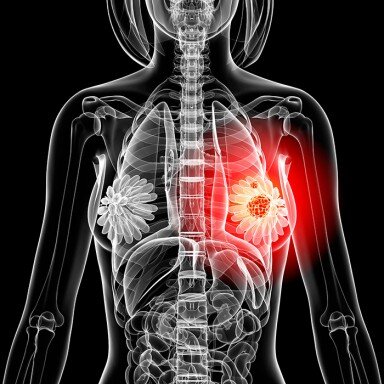A Guide to Breast Health Basics for Women
Chronic neck tension can prevent blood flow from reaching the breast tissue.
Breast tissue is present equally in both males and females; however, hormonal shifts during puberty produce glandular changes in the female breasts making them capable of producing milk. During our reproductive life, the breast contains glandular and ductal tissue plus fibrous connective tissue that surrounds the structures of the breast and provide support.
The Presence of Fat Tissue
Fat tissue insulates and provides shock absorption by being sandwiched between the lobes of the breasts forming almost 85% of the breast tissue. Fat tissue can increase exponentially as the body requires additional storage areas. This is especially the case after menopause when the amount of fat tissue in and around the lobes increases substantially to fill in the space created as the breast tissue thins out. Remember this when we talk about what is actually stored in the breasts.
What Happens With Menopause
After menopause, a woman's breasts continue to change. The empty spaces created by the thinning of the breast tissue allow connective scar tissue to fill in the remaining spaces. This provides an avenue for any potential mutation to proliferate because there is free space. Plus the amount of water and blood within the breasts is reduced which may be a contributory factor to toxic congestion of the breast area. There is a reduction in the amount of estrogen and progesterone produced, so the breasts tend to accumulate fluid between the shrinking ducts and lobules. This may make the breasts more lumpy and sore. In fact, benign cysts will tend to feel smooth and rubbery, while carcinomas are firm, irregular in shape and not painful.
The Anatomy of the Breasts
Breast tissue lies over the pectoralis major muscle of the chest and extends from the sternum across the chest ending in an extension of tissue up into the area under the arm known as the Axillary Tail of Spence. Strong bands of fascia known as Cooper’s ligaments support the breast and it is these areas of fascia that stretch over time allowing the breasts to react to gravity on the chest wall.
Each breast contains multiple lobes, which are the milk-producing glands that empty into common ducts that then feed into 15-20 wider ducts that actually form ampulla or sacs that store the milk produced within the maternal breast. These sacs are attached to the nipple or mammilla in the center of each breast by larger milk ducts. However in order for the ducts to release milk, there must be muscular contraction, hormone stimulation and osmotic expression on the nipple.
Montgomery's glands, located around the edge of the areola, release a fatty substance that protects the nipples during nursing. These are what produce the small bumps that are typically seen around the nipple on the areola. In fact in some women, high cholesterol can increase these small bumps, a sign that excess fat is present.
Circulation, Lymphatic Flow & Hormones
We probably never think about the blood flow that brings food and oxygen to the breast cells. The truth is that blood flow is an important consideration in the health of the breast tissue. Less blood flow means more toxins, less food, less oxygen and less immunity. But how can you judge if your blood flow is strong? Well, you can take a look in the mirror.
All the major arteries that bring blood to the breast area pass through the neck muscles. That means, tension in your neck could clamp down on blood flow, particularly to the outside upper area of the breast. An overwhelming percentage of breast cancers occur in the outside upper area of the breast and into the Tail of Spence both areas that rely on the axillary artery coming from the neck area. Tension there can restrict blood flow and cause breast congestion in this high-risk area.
But even as breast tissue seems to sit waiting for its moment on stage during breast-feeding, hormones are present and circulating through the breast tissue every day of our lives. Estrogen and progesterone are the two hormones that are most responsible for breast development, size, composition and function even beginning in adolescence. They are the determining factors in the development of the stroma and there is evidence to suggest that the health of the stroma (connective tissue) is the crucial factor in the origin of cancer.
But there are also relationships between the breasts and the uterus, ovaries, adrenal glands and even the thyroid, so chronic unresolved issues with any of these tissues can affect the health of your breast tissue. The pituitary gland is also strongly influential in the hormonal balance of the breast tissue, particularly in pregnancy and breast-feeding. In fact, this is the most active time for the breast glands.
The lymphatic system is heavily involved in the breast tissue. This is a key area as the ducts that empty the lymphatic vessels for the entire body lie just at the top of the breasts. Lymphatic congestion is one of the most important aspects of cleansing the breasts, reducing cysts and eliminating toxins. This is especially important for women who have never breast-fed since the ducts have never been opened, nor utilized. These areas can trap toxins and debris in the breast tissue and one of the most common forms of breast cancer is Ductal Carcinoma.
All breast points evaluated in Regulation Thermography





